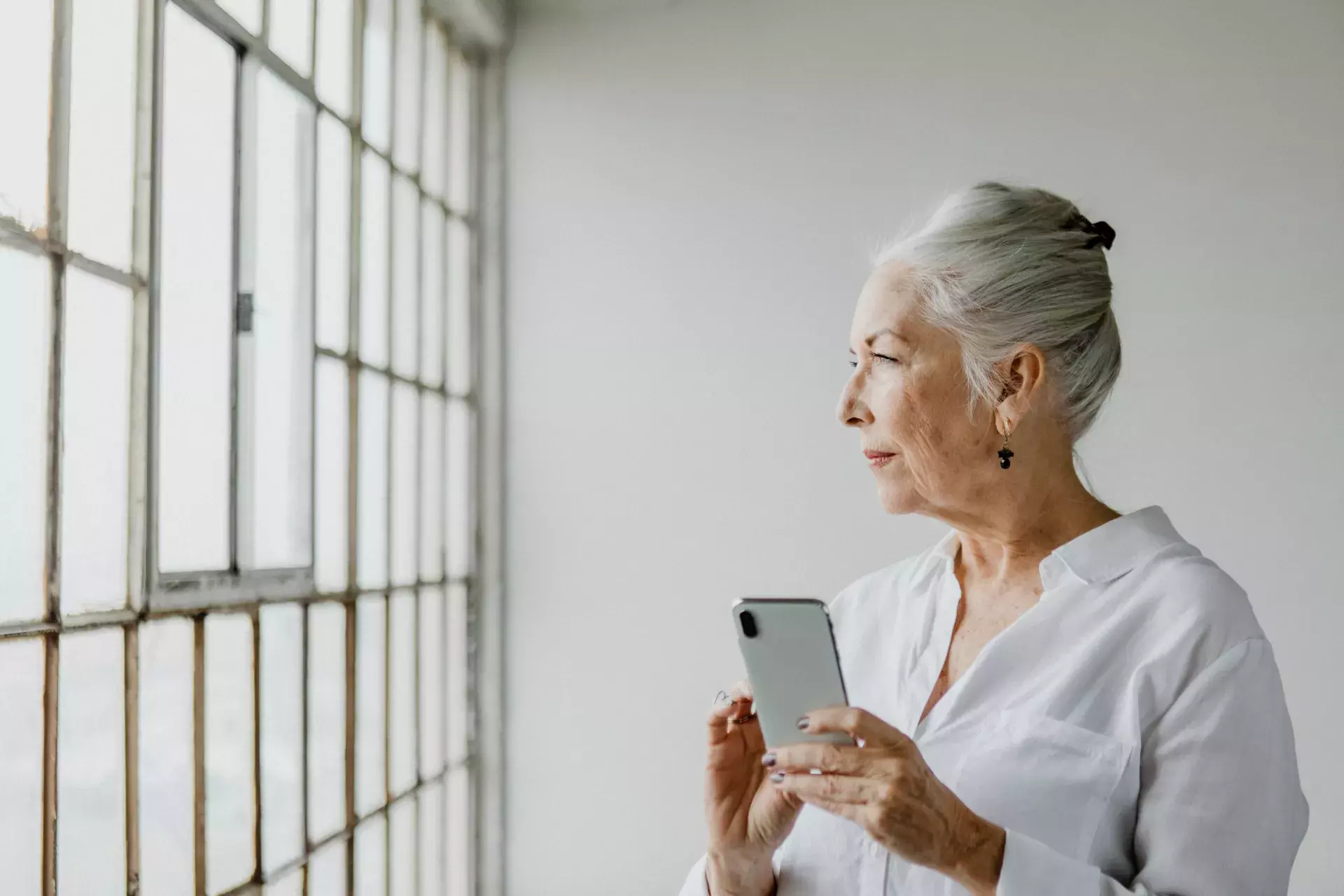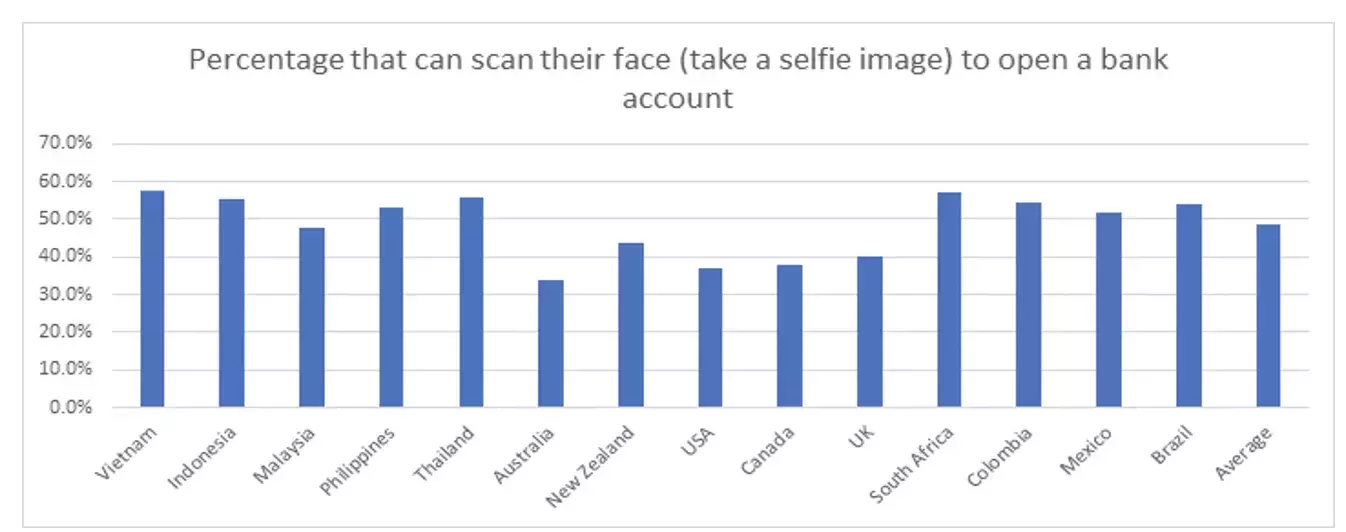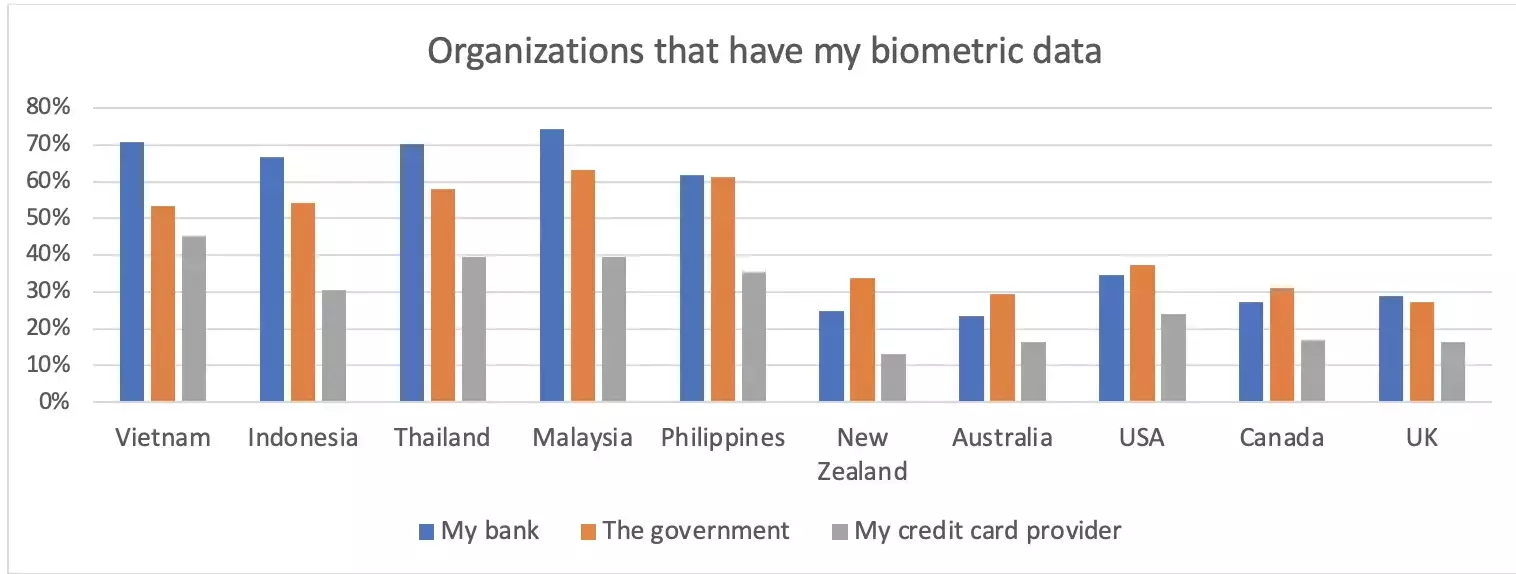FICO Consumer Digital Banking Survey 2021 – Top Five Takeaways
Survey results from 14,000 people in 14 countries, show how they want to open accounts and what they think about identity proofing and biometric security

At the beginning of the year, we commissioned a survey of 1,000 adults in each of fourteen countries to canvas them about their attitudes to opening a range of different financial accounts digitally using websites and apps. There were some very interesting findings and some results that challenged my pre-conceptions and received wisdom! At a country or regional level, you can find out what the top trends for each were by downloading the e-books:
- North America – Covering Canada and USA
- UK
- South Africa
- Brazil
- Colombia and Mexico
- Australia and New Zealand
- Vietnam
- Indonesia
- Thailand
- Philippines
- Malaysia
In this blog I’m going to take a view across all of the countries surveyed to deliver my top five insights:
- Digital ‘natives’ probably aren’t who you think they are – unless you’re from Australia or New Zealand.
While we’re used to thinking of Gen Z as the digitally savvy generation constantly interacting with their devices, our survey showed this wasn’t necessarily the case, at least not when it comes to financial services. In 12 of the 14 countries surveyed the 18-24-year old’s were the age group least likely to say they wanted to use apps or websites to open bank accounts. In most countries they were also the least likely to say they could carry out tasks associated with using an app to open an account such as downloading an app from an app store. Why could this be? In our FICO Identity Matters podcast I discuss it with Young Money Blog’s Iona Bain and our Identity and Authentication Expert James Roche.
- People understand why identity proofing happens but when it causes disruption tolerance is low.
As I discuss in this blog, people have a good understanding of why their identity needs to be checked when they open a new account. They are also aware of the threat that their stolen identity could be used by a criminal to open an account – on average 14% say they are sure, or they think it is probable that this has happened to them. Despite this understanding, when it comes to the processes involved in identity checking, anything other than a seamless experience causes high rates of application abandonment. When opening accounts digitally, if asked to mail documents or visit branches on average almost a quarter of applications will be immediately abandoned and a further 22% will be delayed with respondents opting to only complete the additional steps eventually. When pushed to other digital channels such as an identity portal or to email documents, application abandonment and delay rates remain high.
- Intuitive but flexible customer journeys are a basic requirement
Our survey showed that People’s abilities and preferences for carrying out the tasks associated with opening a financial account varies. Some are happy to provide selfies, others can scan documents, while some are more than ready to provide biometric authentication. In general, those from growth economies were more likely to be able to carry out the tasks required to use an app to open an account compared to those from developed economies - as illustrated by the percentages that say they can scan their face for comparison to the photo in their documentary evidence to prove their identity.

What individuals can do—or can be encouraged to do—is personal. This makes intuitive apps and websites that can educate and coach customers important. They need to adaptively provide other routes to completion when things don’t quite work out.
- We may be at an inflexion point for the use of apps to open accounts digitally
Each country surveyed is on its own path towards using digital means to open financial accounts, there was definitely variation, particularly between growth and established economies. The preference for opening accounts digitally (using either an app or a website) is more evident in established economies. However, when you just look at the usage of apps to open accounts then the growth economies are leading the way. In these countries, the preference for using apps rather than websites, largely extends across all age groups surveyed. When we compare this to developed economies the preference for using apps rather than websites is strongly biased towards those under 35. However, apps rather than websites is a predominant trend among those younger adults – as they mature it is reasonable to expect that this trend will continue to develop and as history has shown, more mature people are perfectly capable of adopting new technology.
- Using biometric security to protect accounts is accepted and even expected
In every country surveyed the vast majority of people are open to using biometrics to secure their financial accounts with most saying either they were happy to provide their bank with a biometric or were happy to as long as they understood why. On average just 10% think that their bank should never capture biometric data to secure their accounts, though this varied from as low as 3.2% in Brazil to 18.8% in Australia. Over half of people surveyed (55%) actually think that biometric identification should be set up when they open an account – ready for future authentication. The use of biometrics was another area where the growth economies appear to be leading the way, when asked which organizations they think already hold their biometric data those in South East Asia were much more likely to recognize the role biometrics already play.

These are my five highlights from the FICO consumer digital banking survey – but they’re just the tip of the iceberg of the insight we uncovered. In addition to the e-books listed above, there is a whitepaper: Identity Proofing and the Changing Face of Digital Banking that looks at the Global results in more detail and for more views and debate on what the statistics means we have a series of FICO Identity Matters podcasts on www.FiCO.fm
Popular Posts

Business and IT Alignment is Critical to Your AI Success
These are the five pillars that can unite business and IT goals and convert artificial intelligence into measurable value — fast
Read more
It’s 2021. Do You Know What Your AI Is Doing?
New "State of Responsible AI" report from Corinium and FICO finds that most companies don’t—and are deploying artificial intelligence at significant risk
Read more
FICO® Score 10T Decisively Beats VantageScore 4.0 on Predictability
An analysis by FICO data scientists has found that FICO Score 10T significantly outperforms VantageScore 4.0 in mortgage origination predictive power.
Read moreTake the next step
Connect with FICO for answers to all your product and solution questions. Interested in becoming a business partner? Contact us to learn more. We look forward to hearing from you.
